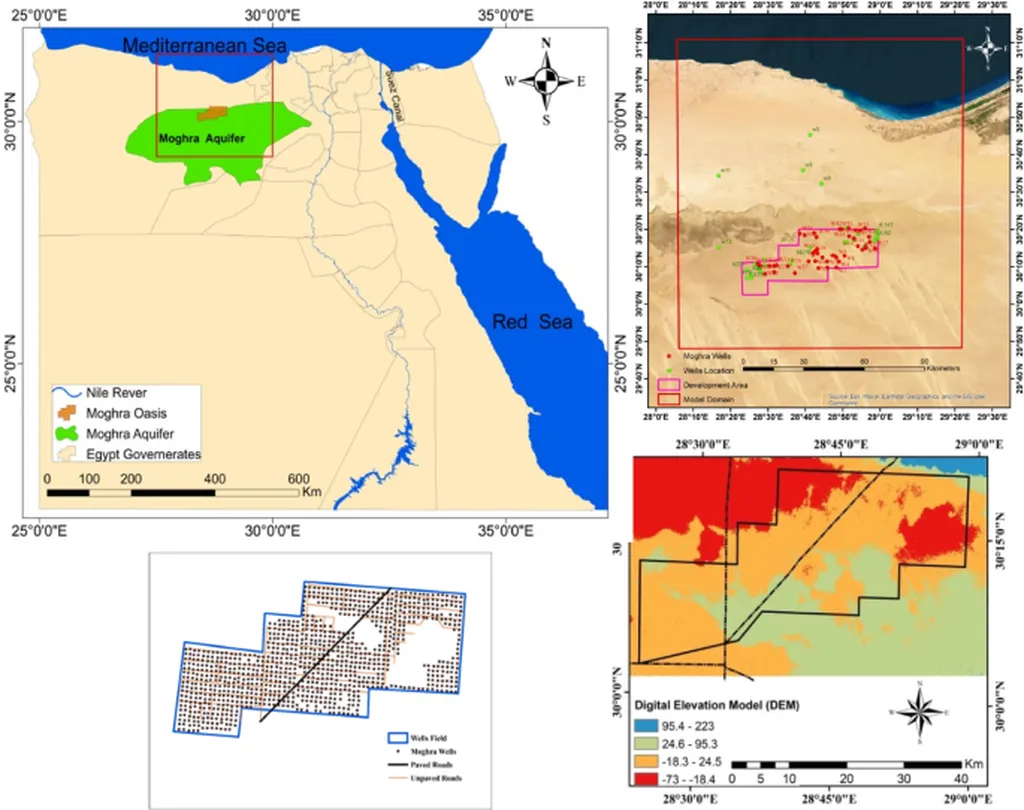In the heart of Egypt, researchers are tackling a global challenge that hits close to home: saltwater intrusion (SI) into coastal aquifers. Led by Asaad M. Armanuos of Tanta University’s Irrigation and Hydraulics Engineering Department, a groundbreaking study has developed a web-based tool to analyze and visualize the dynamics of the seawater-freshwater interface. This tool, built with JavaScript, integrates several established analytical solutions, making complex data accessible and user-friendly.
The research, published in the *Journal of Groundwater Science and Engineering* (translated to English as *Journal of Groundwater Science and Engineering*), focuses on the critical issue of saltwater intrusion, which threatens freshwater resources in coastal regions worldwide. Armanuos and his team applied the tool to three case studies, including a hypothetical unconfined coastal aquifer, an experimental coastal aquifer, and a real-world scenario in Gaza. The Gaza case study is particularly notable, as it employed the public domain code SEAWAT to simulate variable-density flow within the coastal aquifer.
“The tool allows us to compare the results from SEAWAT with those obtained from analytical solutions under different boundary conditions,” Armanuos explained. “This comparison has shown a strong correlation, providing valuable insights into the dynamics of saltwater intrusion.”
The implications of this research are significant, particularly for the energy sector. Coastal aquifers are often located near industrial and energy production facilities, making them vital sources of freshwater for cooling and other processes. Understanding and mitigating saltwater intrusion can help ensure the reliability and sustainability of these water sources, ultimately supporting the stability of energy operations.
One of the key findings of the study is the impact of Sea Level Rise (SLR) on the shifting position of the seawater intrusion toe. As sea levels rise, the interface between saltwater and freshwater shifts, potentially leading to increased saltwater intrusion and reduced freshwater availability. The web-based tool developed by Armanuos and his team provides a practical means of visualizing and analyzing these changes, enabling stakeholders to make informed decisions.
“The tool is designed to be accessible and user-friendly, promoting broader dissemination and practical application of the research outcomes,” Armanuos said. “This is crucial for raising awareness and fostering collaboration among researchers, policymakers, and industry professionals.”
The research also highlights the importance of integrating analytical solutions and numerical simulations in the study of saltwater intrusion. By comparing the results from SEAWAT with those obtained from analytical solutions, the study provides a comprehensive understanding of the dynamics of the seawater-freshwater interface.
As the world grapples with the challenges of climate change and sea level rise, the work of Armanuos and his team offers a valuable resource for understanding and mitigating the impacts of saltwater intrusion. The web-based tool developed in this research has the potential to shape future developments in the field, promoting more effective management of coastal aquifers and ensuring the sustainability of freshwater resources for generations to come.

